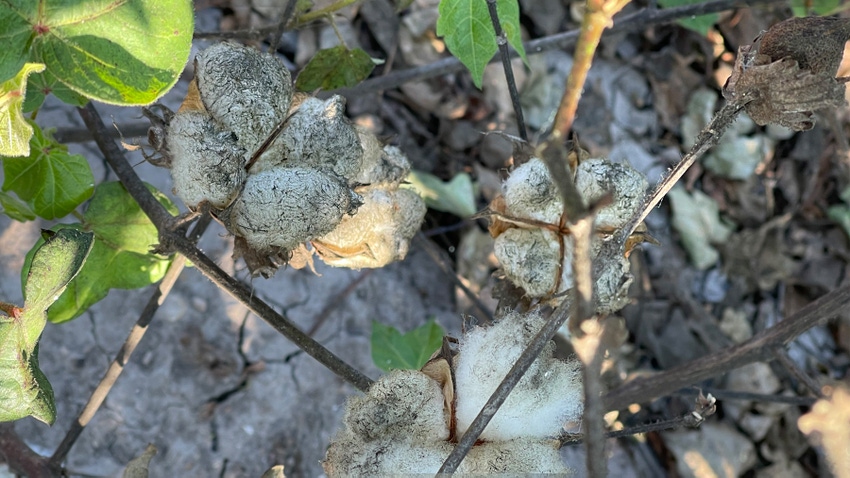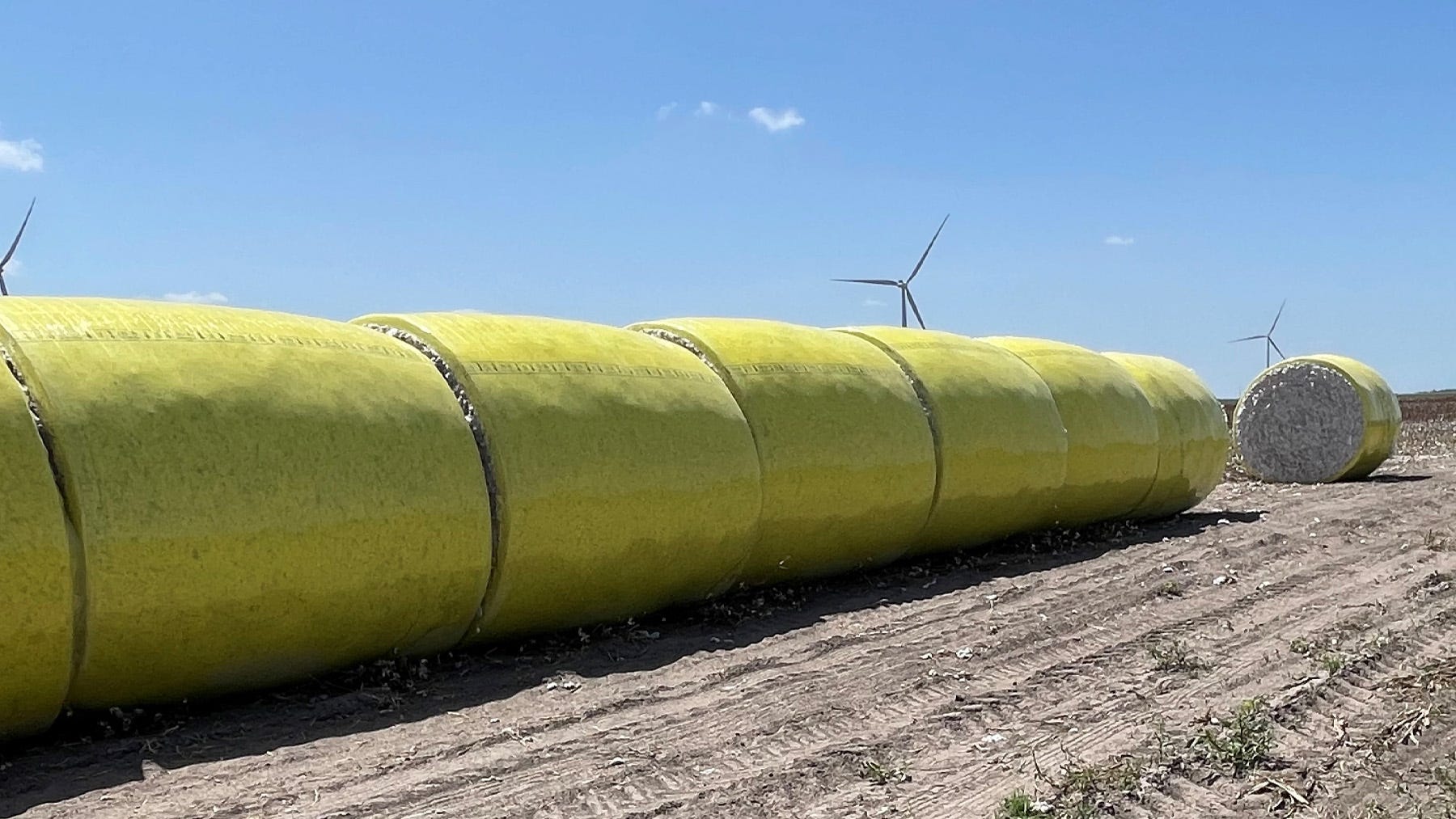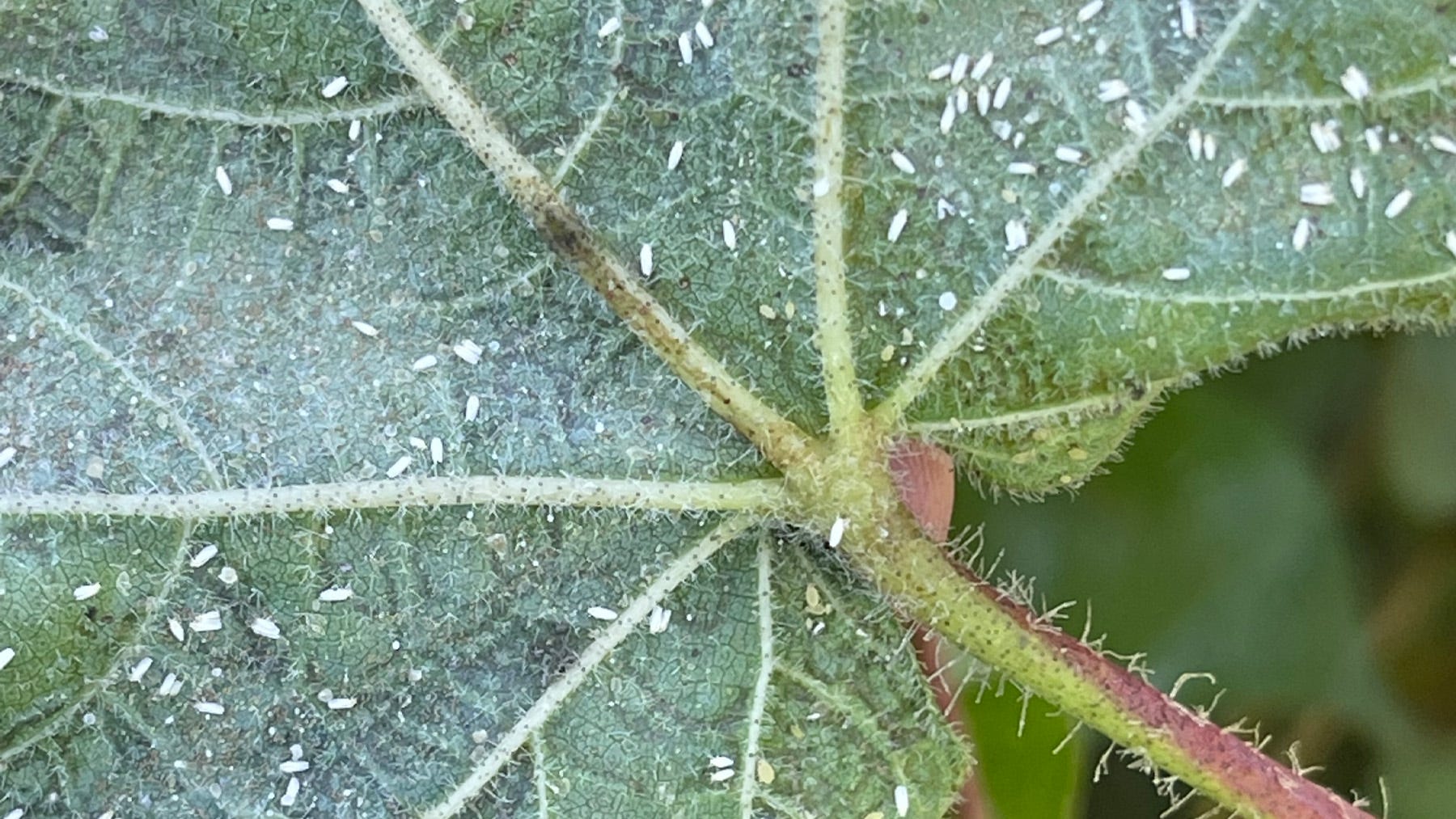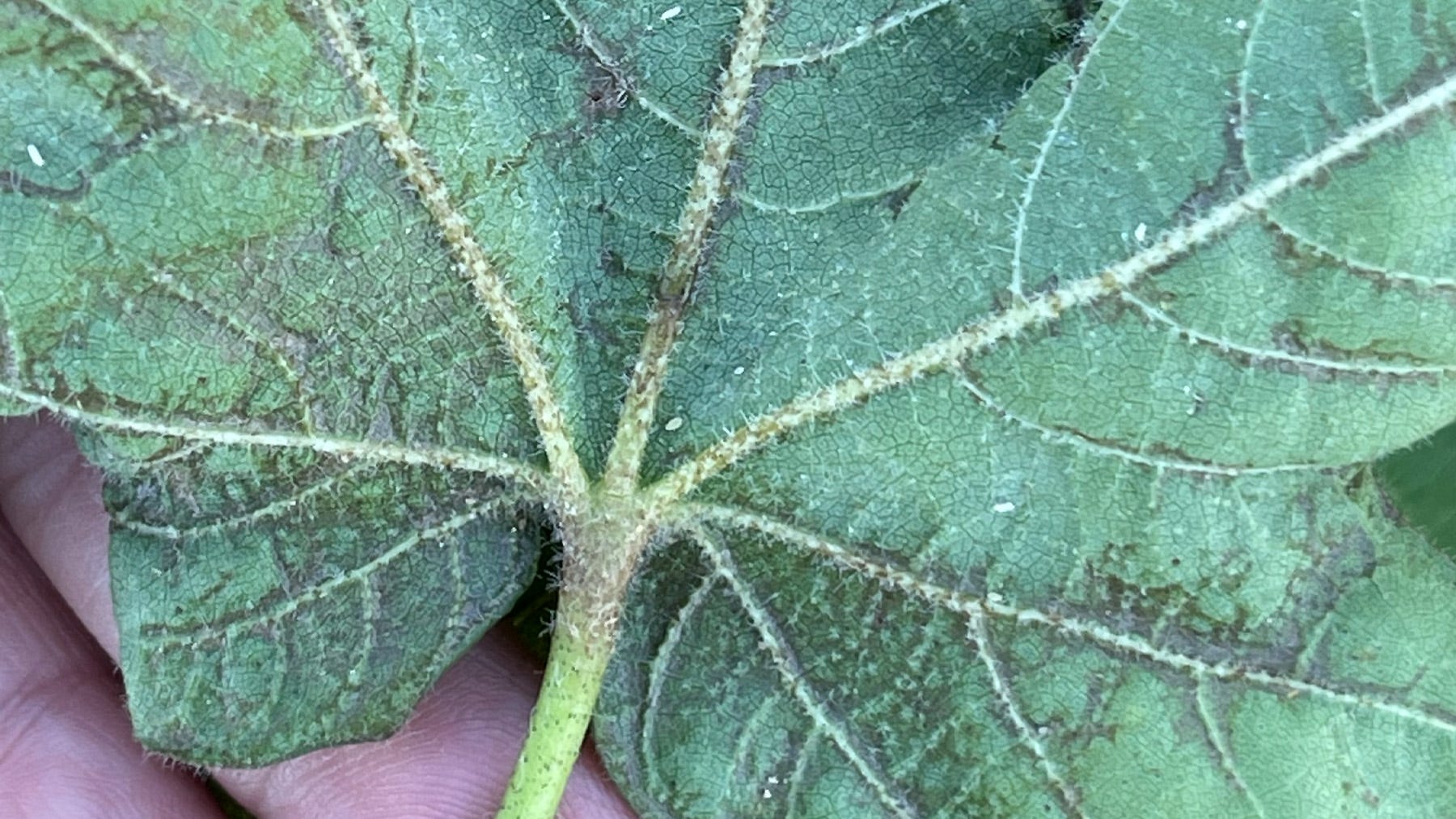
In early June, South Texas cotton and grain observers used words like fantastic, beautiful, and gorgeous to describe crop conditions.
Disaster is not imminent in early August, but the tone is different. Back in June, even with the hopeful outlook at the time, observers couched their optimism with caveats such as: The crop is not made yet. We have a long way to go. We can’t predict the weather.
“Everything will be down,” says Texas A&M AgriLife Extension IPM Specialist Danielle Sekula, Weslaco.
“A lot of bolls and squares dropped in late June and into July,” Sekula explains. “Temperatures routinely reached 102 degrees with a heat index of 112; at night temperatures dropped only to 80. It’s been miserable this year. In years past, days would get hot but evenings would get cooler. It is surprising what a 4 to 5 degrees will make on plants.”
“Dryland cotton is stressed,” says Hidalgo County Extension Agent Vidal H. Saenz. “With no rain and daytime temperatures at 100, 103, 104, cotton, especially dryland, was stressed.”
Saenz says about 30% of the county’s cotton is harvested. “On irrigated cotton, growers are pushing for higher yields. That cotton is getting pampered, but cotton not being watered is stressing.”

Harvest is underway in the LRGV. (Photo by Danielle Sekula)
He doesn’t expect big yields. “Most of our cotton looks short, 2 feet tall instead of the usual 2 1/2 feet.
“The corn crop looks pretty good except for late-planted fields. Even with drip irrigation, food corn planted late looks beautiful, but it was so hot at pollination the kernels did not fill. That will hurt yield.”
Planting season across South Texas, from the Lower Rio Grande Valley up through the Coastal Bend just south of Houston, started off dry. Timely rains in May turned things around and crops got a good boost with promising prospects. Then it turned dry and hot.
“We got enough moisture to germinate corn and sorghum but still had stress at the beginning,” Sekula says. She adds that LRGV corn growers typically irrigate three times. Timely rains, about every week, got crops up to good stands and some corn producers did not irrigate at all.
“Yields are not as good as in the past but okay for corn and sorghum. It’s pretty much average. The grain sorghum crop is just fair. Certain varieties made 6,000 pounds last year; this year it’s about 4,000. It was too hot and the crop was stressed.”
Coastal Bend
In the Coastal Bend, the situation is similar with some optimism for the grain crop.
“We’ve seen some phenomenal grain sorghum yields,” says Jeff Nunley, executive director, South Texas Cotton and Grain, Corpus Christi. “Grain sorghum yield of 6,000 pounds is common. It’s lower in dryer areas. The highest I’ve seen is 10,000 pounds on one small field. The field next to it made 9,000.”
Nunley says corn yields have been good “for this area. I’ve heard 125 bushels per acre a lot around Corpus Christi. Some fields in the Upper Coast are making 150 or better.”
He says a big challenge for grain has been storage. “United Ag Cooperative reports it’s the biggest crop they have ever handled.” The Coastal Bend area runs from south of Houston to Kingsville.
“I’m surprised that grain crops made as well as they did,” Nunley says. “A little rain at the right time could have made it interesting.”
He’s not as high on cotton. “Cotton will be a mixed bag. Early reports indicate a bale-and- a-quarter to a bale-and-three quarters. I’ve seen some cotton that looks really good.”
Harvest time in LRGV
Sekula says most of the growers in her area “have started to harvest or are transitioning to start. We still have cotton along the river that’s behind.”
She says she will likely cut back on scouting and not write another Pest Cast [weekly newsletter] for several weeks, “not until we have some good acreage harvested. Now, it’s very hot and very dry, no rain forecast. That’s good for cotton harvest.”
“Every year, producers face challenges,” Nunley says. “This season is no different. We had a hard start, a glimmer of optimism, and then back to a roller coaster. That’s hard on farmers’ emotions. Most now hope it stays hot and dry through harvest. Forecasts show 100-plus degrees as far out as we can see. The only change would be if something tropical comes in.”
LRGV insect pressure
Sekula says cotton insect pressure in the Valley “has been about the same as usual. We had just about every insect you could think of. We had the same thing last year, but good moisture early and moisture in-season helped see us through. This year we stressed early, got rains, and stressed at the end. That’s a big deal with yield.”

Whiteflies and thrips populations are high in the LRGV. (Photo Danielle Sekula)
In her latest Pest Cast (out every Friday), she reports the main cotton pests include “high populations of whiteflies and chilli thrips in fields along the river. Chilli thrips populations are being managed to prevent premature defoliation in younger cotton.”
She says growers should suppress whiteflies “to avoid sooty mold growing on the sugars they excrete, which could stain the lint in open boll cotton and also inhibit plant growth.”
She says high populations of whiteflies show up in field edges. “We were also seeing a late infestation of cotton aphids on the upper leaves causing lots of stickiness from honeydew secretions.”
In addition, a few plant bugs (tarnished and verdes) remain active but populations have tapered off. “We are still seeing some leaf-footed bug activity in some late cotton.”

Chilli thrips in LRGV cotton. “Chilli thrips populations are being managed to prevent premature defoliation in younger cotton.” (Photo Danielle Sekula)
Sekula says some of the first cotton bales are out in the fields and showing up on gin yards. “Cotton harvest has officially begun for the LRGV and will continue through September. “
Sesame
Sesame is about to mature and looks about 80% normal, Sekula says. “Fields that received moisture look good, if not it will be short. Most sesame has completed potential pod load as the plants mature.
“We still see no sign of leaf rollers. We are seeing whiteflies in sesame but there is no need for treatment as there are myriad bugs present eating them.”
Insect pests might be troublesome, as they usually are, but it’s the heat and dry weather that has put a pall over an early optimistic outlook.
About the Author(s)
You May Also Like






